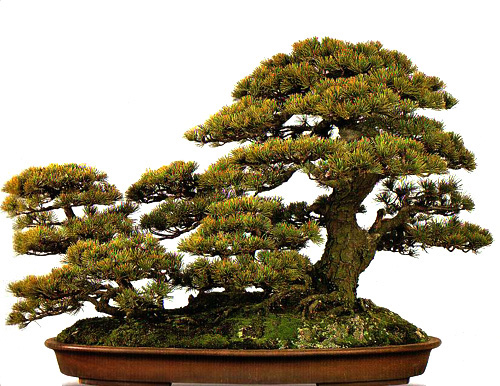
This Japanese white pine is from our 2010 bonsai calendar. It brings to mind the pines on Point Lobos (California central coast). Though it’s difficult to be certain, it has the feel of a sinuous root (netsuranari) style forest (it appears that perhaps the large trunk is separate and the rest is a netsuranari, but again, it’s difficult to be certain). Netsuranari or not, all the trees seem to be cast from the same genetic mold.
The appearance of age
It is somewhat unusual to see forests here in West that use old trees. Most older stock, when you can find it, is used for single trees. It’s a little different in Japan where older stock is more common and where there is so much field grown stock that develops relatively quickly and has the appearance of age.
Genetic integrity
When trees grow from the one root system, they maintain genetic integrity. The advantage is that all the parts tend to look like they belong together; just like an isolated stand on a mountain or by the sea, which is precisely the feeling this planting conveys.
Most netsuranari (sinuous root style) are Japanese white pines
Though not definitive, the fact that it’s a Japanese white pine is a another argument for it being a netsuranari.
I have the calendar and this tree is featured in September. I save all the calendar pictures. They make great frameable pictures and occassionally I will make a pencil drawing of one I particularily admire. To me it can not be anything but a netsuranari. I do not see any breaks in the root (old trunk) line.
Yeah. It does look like a netsuranari. The only thing that give me pause about the main tree, is its exposed roots. This could indicate a separate root system for that one tree.